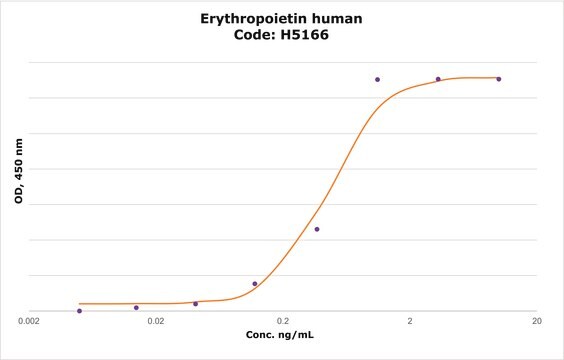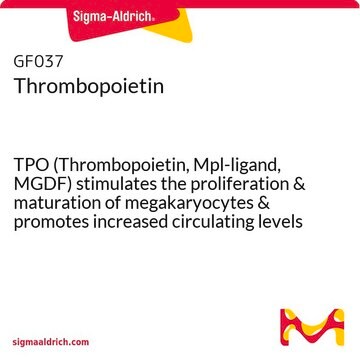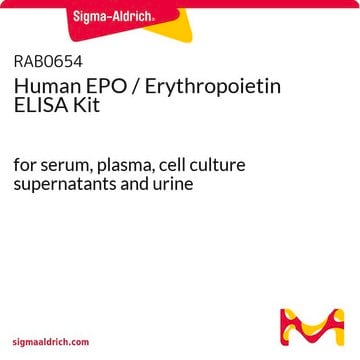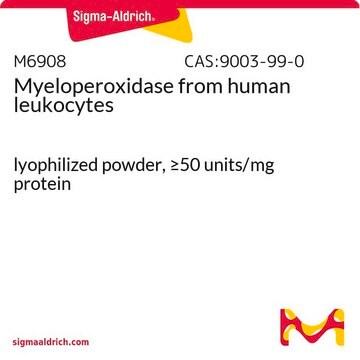SRP6158
EPO human
recombinant, expressed in HEK 293 cells, ≥95% (SDS-PAGE)
Sinônimo(s):
EP, EPO-alpha, Epoetin, Erythropoietin-alpha, MGC138142
About This Item
Produtos recomendados
fonte biológica
human
recombinante
expressed in HEK 293 cells
Ensaio
≥95% (SDS-PAGE)
forma
lyophilized
peso molecular
36 kDa (monomer, glycosylated)
embalagem
pkg of 10 μg
técnica(s)
cell culture | mammalian: suitable
nº de adesão NCBI
nº de adesão UniProt
Condições de expedição
dry ice
temperatura de armazenamento
−70°C
Informações sobre genes
human ... EPO(2056)
Descrição geral
Aplicação
- EPO (erythropoietin) has been used as a component of the culture medium for cardiac stem cells.
- In cultured cerebellar granule cells and hippocampal neurons, it has been used to study effect of EPO on glutamate release.
- It has also been used as a component of endothelial differentiation medium.
Ações bioquímicas/fisiológicas
forma física
Nota de preparo
Reconstituição
Código de classe de armazenamento
11 - Combustible Solids
Classe de risco de água (WGK)
WGK 3
Ponto de fulgor (°F)
Not applicable
Ponto de fulgor (°C)
Not applicable
Certificados de análise (COA)
Busque Certificados de análise (COA) digitando o Número do Lote do produto. Os números de lote e remessa podem ser encontrados no rótulo de um produto após a palavra “Lot” ou “Batch”.
Já possui este produto?
Encontre a documentação dos produtos que você adquiriu recentemente na biblioteca de documentos.
Os clientes também visualizaram
Nossa equipe de cientistas tem experiência em todas as áreas de pesquisa, incluindo Life Sciences, ciência de materiais, síntese química, cromatografia, química analítica e muitas outras.
Entre em contato com a assistência técnica










